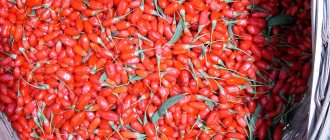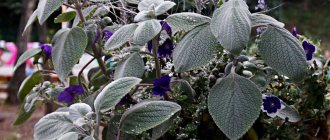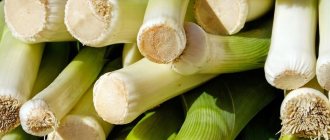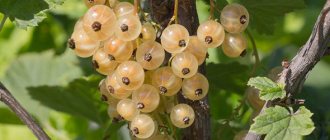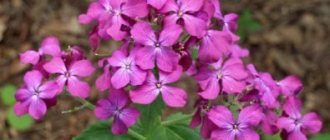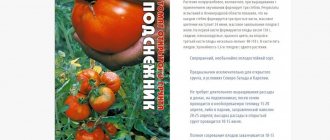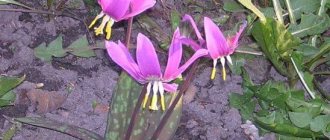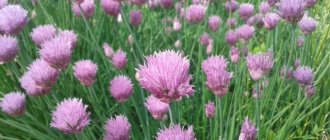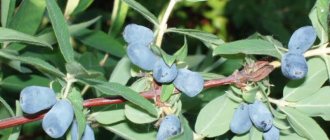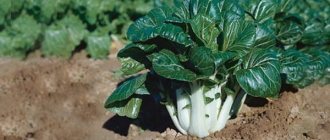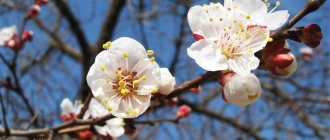What are peas and what are they like?
Legumes, to which peas belong, are classified as citrus fruits in terms of the amount of vitamin C, and they contain so much protein that they can easily replace meat products. This is an alternative option for people who follow a vegetarian diet and for those who are intolerant to animal protein.
Most vegetable growers know representatives of the family:
- Lentils
- Soybeans
- Peas
Ripe peas (photo)
Of all these useful and nutritious plants, peas are the most widespread due to their unpretentiousness.
The appearance of vegetable peas, the only one suitable for human consumption, is well known to gardeners. Its leaves are located on branches that are attached to a tetrahedral stem.
The branch ends with tendrils. With their help, the plant moves further vertically. Low-growing varieties that do not need to climb to heights do not have these tendrils or they are not functional.
Peas are a plant with a herbaceous stem, succulent leaves and fruit-pods. Depending on the variety, the pods can be straight or curved. Each fruit, also called a bean, contains seeds hidden under the shell. They are the main target of the vegetable grower.
There are two subspecies of seed peas:
Sugar. The leaves of young beans are tender and are eaten along with peas. During the period of full ripeness, the seeds become wrinkled, but do not lose their taste properties. Such seeds are used for canning and freezing. From them the famous green peas for salads and vinaigrettes are obtained.
Peeling. A special feature of this pea is the hard flaps of each bean. This subspecies is most often used for drying and subsequent consumption in soups and side dishes. Mature seeds are also frozen or canned.
Pea varieties are also classified according to ripening time:
- Early. No more than 60 days pass from the emergence of seedlings to the harvest of the first harvest.
- Average. The first edible fruits can be harvested 70 days after germination.
- Late. These varieties take more than 80 days from germination to the formation of peas.
Early varieties:
- Avola
- Alpha
- Golden eagle
- Faith
- Voronezh green
- Vegetable 76
- Premium
- Early Gribovsky 11
- Amber
Ripening peas on a bush
Medium varieties:
- Adagumsky
- Viola
- Dinga
- Emerald
- Winner t-33
- Fragment
- Havsky pearls
Late varieties:
- Atlant
- Sunrise
- Sugar 2
- Perfection 653
- Late-maturing brain improved
The purpose of cultivation may be different for each owner. This is what you need to start from when choosing peas. You can extend the pea season by planting several varieties of different ripening periods.
Peas: characteristics of the culture
Peas (Pisum) are an annual herbaceous plant of the Legume family (Fabaceae) with a weak, round-faceted, lodging creeping stem, growing from 0.2 to 2.5 m in length. There are standard varieties in which the strongly thickened stem does not branch and does not lie down. The branched root system of this crop is of the taproot type and goes deep into the soil. Beneficial nodule bacteria develop on the roots and in the immediate vicinity of them, which absorb and accumulate nitrogen from the air, thereby enriching the soil with it.
Compound pinnate leaves consist of 2-3 pairs of small elongated bluish-green leaf blades. The petiole of each leaf ends in branched thin tendrils, with the help of which the pea clings to a support or neighboring plants. White, pinkish or purple flowers of the moth type are located in the axils of the leaves in 1 or 2 groups. In early ripening varieties, the peduncle appears after 6-7 leaves, in later varieties - after 12-23 (depending on the time of ripeness).
The culture is self-pollinating; a pod develops in place of the flower. A straight or curved cylindrical bean consists of 2 leaves, between which smooth or wrinkled peas (from 3 to 10 pieces) are placed in 1 row. The ripening time for peas can vary (from 55 to 100 days from planting).
All varieties of this crop are divided into 3 groups:
- Peeling. The inside of the valves is covered with a dense parchment layer and is not eaten. Only green, smooth, shiny peas are used for canning. The most popular varieties are: Alpha, Early 301, Atlant, Vera, Viola, Emerald and others.
- Sugar (pods). Delicate doors break easily because they do not have an internal leathery-fibrous layer. The beans are juicy, tasty and meaty. The entire pod is used for food. Varieties: Sugar Marrow 6, Inexhaustible 195, Sugar, De Grasse 68-28, Zhegalova 112 and others.
- Semi-sugar. At first the pods are tender and crispy, the young beans are used together with the leaves. With age, a hard parchment layer appears in the places where the halves are held together. The variety Karaganda 1053 is grown in Russia.
Growing peas of all varieties uses the same technology and is not particularly difficult. But there are a few important points to consider.
Which varieties to choose
In apartments and balconies, it is more logical to choose varieties with limited growth, so as not to build complex structures for their vertical vines.
Peeling varieties:
Adagumsky. This plant does not need support. Its advantages also include early maturation. This variety is used for canning and fresh consumption.
Early Gribovsky 11. The earliest ripening variety for universal use. The plant grows no more than 60 cm in height. The harvest is bountiful.
Havsky pearls. Peas of this variety of unusual yellowish-green color are consumed mainly fresh. The height of the plant can reach 80 cm in indoor conditions.
Vegetable 76. Early variety and very productive. The height of the stem is 70 cm. The peas are not very large, but have excellent taste.
Sugar varieties:
One of the pea varieties
Sugar 2. Its stem does not lie down, although it stretches up to 70 cm in height. A garter is needed only as insurance.
Sugar. The low-growing stem, no higher than 60 cm, holds many branches with tasty beans, which are used as food entirely due to their delicate structure.
Zhegalova 112. Plant height is about 60 cm. The beans are without voids, the peas are very tasty.
If it is possible to create a garter or trellis a little more than a meter long at home, then you can try growing tall varieties of peas:
Oregon. The height of the plant in good light in indoor conditions can reach one and a half meters. Medium ripening variety, multi-purpose fruit. They can be eaten, preserved, dried.
Inexhaustible 195. Mid-early variety, about 120 cm high. The fruits are delicious. These sugar snap peas are eaten raw, canned and frozen. Children love him very much.
Favorite varieties appear in the vegetable grower’s piggy bank only over time after many years of testing.
Sometimes this happens a little earlier, if you are not afraid to experiment and plant 2 bushes of different new varieties every year.
Preparing beans for sowing
Sugar and shelling varieties of green peas grow well at home. To get healthy and strong plants, seed material for planting is prepared in advance. First of all, the beans are calibrated and rejected.
The harvested grains are sorted, sorted and seeds with obvious defects are removed. The selected material is placed in a saline solution, which is prepared at the rate of 1 large spoon of table salt per 1 liter of warm water. The solution is stirred before use.
Empty, ineffective peas float to the surface and are thrown away. High-quality specimens suitable for planting sink to the bottom of the vessel. The grains are taken out and slightly dried. Thus, all beans with defects are calibrated using the selection method.
Do I need to germinate seeds?
There is ongoing debate among gardeners on the topic of germinating pea seeds. Most are confident that only swollen grains with sprouted sprouts after planting will quickly sprout and will grow and develop better.
Proponents of planting grains dry argue that there is no need for soaking, since regularly moistened soil will do its job, saturate the seeds with moisture and allow them to germinate in their natural environment.
Pre-treatment and germination
If you decide to plant peas, before planting it is necessary to pre-treat the seeds and begin germination. To do this, gauze folded in several layers is moistened and laid out on a saucer. The prepared grains are placed in a container and covered with the same layer of cloth.
The plate with the seeds is put in a warm place. The grains should be soaked for several days, periodically soaking the gauze with moisture. After the expiration date, the germinated peas must be washed in clean water and only then can planting begin.
Seed material can be germinated in biogrowth stimulants. After soaking in special compounds, sprouts will appear much earlier.
What you need to grow
Before you begin your experience of growing peas at home, you need to decide on a list of necessary things:
Container for planting. The root of peas grown in open ground can reach a length of about a meter. At home, it does not reach such dimensions, but the growing container should be free and as deep as possible. A small amount of soil leads to overheating of the roots. You should not expect a full harvest under such growing conditions.
Soil mixture. Peas of any variety love loose soil. An important component in it is the loosening component. This can be sand, chopped straw, coconut substrate.
Soil acidity should be close to normal.
Pea harvest that will soon ripen
There are several options:
Buy soil mixture at a garden center. This is quick and convenient, but does not save plants from possible diseases. The carrier may be a purchased soil mixture.
Recently, vegetable growers who use such mixtures are gradually abandoning them due to the unscrupulousness of the producers. The composition of the soil also does not always satisfy the vegetable grower.
Make your own mixture from humus, forest soil, sand in a 1:1:1 ratio. The humus in this case is rotted manure. In the forest, it is better to take soil from under aspen, oak, and poplar.
Birch or conifers are not suitable for this purpose. It is better to take mountain sand without clay impurities. River and most accessible sand contains a lot of clay, which makes the soil heavier.
Take regular soil from the garden. This option is not as complicated as the previous one. Its disadvantage is that garden soil needs disinfection, as a result of which, in addition to harmful ones, beneficial microorganisms are also destroyed.
Use coconut substrate for growing. It can be purchased at garden centers. But it is more economical to buy already used briquettes from a large vegetable farm. This material can be used several times. And then it can be added to improve the soil structure.
Devices for tying plants. Low varieties do not need trellises or supports. For reliability, you can tie the bush to a bamboo stick, which are available in a large assortment in flower shops.
Peas grown at home
For peas, a good option is to create a trellis or place the vines of this plant on a net attached to the wall.
With this growing method, you cannot place the mesh close to the wall. This disrupts the air exchange of the plant. On the balcony in such conditions under the rays of the active sun, peas will not give the desired results.
The advantages of this method of cultivation include the convenience of harvesting and an additional decorative effect.
With the help of such a screen in the winter garden you can separate zones and use edible greens and peas.
A little preparation, patience and time will reward the experimenter with delicious peas and juicy greens. At a time when there is snow outside the window, growing peas on a windowsill or warm balcony is not difficult.
Expert opinion
Yulia Yurievna
I have a large garden and vegetable garden, several greenhouses. I love modern methods of cultivating plants and mulching the soil, and I share my experience.
Ask a Question
Pollination is important for pea fruiting. How are peas pollinated? This plant is usually a self-pollinator. This process takes place until the bud opens.
When growing peas at home, it is important to know how long all this will take in order to predict the harvest when there is not yet an abundance of other crops. How long does it take for peas to grow?
It depends on the variety and living conditions. For example, early ripening varieties ripen by 1.5-2 months. But late-ripening vines can ripen for about 3 months. As a rule, these dates are indicated on the packaging of the selected variety.
Reviews about growing peas at home
Before planting this or that crop at home, we recommend that you read the reviews of gardeners and summer residents who have already appreciated all the advantages and disadvantages of this activity. Here are some of them.
Olga: “I planted peas purely out of curiosity, not really hoping for success, but in the end I recently harvested my first “ridiculous” harvest. Of course, the harvest could have been richer if some unfavorable events had not happened to my green peas, but what else will happen: there is a lot of time before summer, more than one batch will have time to ripen!”
Anna: “I planted 3 peas in one pot. As soon as it came up, I tied several thick woolen threads from the pot to the top of the window so that the peas would have something to curl around. I noticed that my peas don’t really like heavy watering - the leaves start to dry out.”
Margarita: “Peas do not require pollination, and they can be safely planted at home in any quantity. You may find black spots on the leaves; these are aphids. To prevent this, wash everything off with soapy water. At home, I made a small bed for my child from a 2.5 liter plastic bottle, cutting it to length. I covered it with soil and planted peas, and in the space between the seedlings I sowed arugula. It will be tasty and healthy."
What do peas like?
Taking into account the preferences of the plant is the task of its owner. Only in case of mutual understanding will it give the vegetable grower a tasty harvest.
How to plant peas at home? When grown at home, peas like:
- Spacious capacity
- Loose soil
- Lots of light, but not active sunlight
- Regular watering
- Feeding
- Not very high temperatures
- Loosening the top soil layer
- Timely harvesting
The pot for growing peas at home should be deep and spacious enough. Suitable containers are those sold in flower shops for growing orchids. The principle is the same - good breathability and the possibility of gartering or support.
Harvested peas that can be eaten
The soil or soil mixture for growing peas at home should be loose and moderately moist. This is the main condition. Soil fertility in indoor conditions can be compensated by fertilizing and various biological additives.
Growing peas at home for greenery or fruiting should be done in a well-lit place. This may be a wide window sill or a warm balcony.
In addition to location, an important condition is regular, but not excessive, watering. The top layer of soil should not be wet, but slightly dry. This is easy to determine using human hands. Too dry soil feels prickly with your fingers.
Slightly moisturized, it is perceived by the human senses more calmly and comfortably.
There are no definite recommendations here. The condition of the soil layer depends on its thickness, the location of the pot and the ambient temperature. In this case, human receptors will be the main reference point for the plant owner.
You need to feed the plant no more than once a week. At the very beginning of growth, it is good to use the drug HB-101 as a biostimulant.
At first glance at its price, it seems inappropriate to use this biostimulant as the main source of nutrients. But with further use, the vegetable grower realizes that one drop of this elixir per liter of water is enough to give several plants all the useful substances and stimulate them to life.
Feeding with this preparation should be done by spraying on the leaves. It is also useful to use complex fertilizers such as Fertik or Kemira as root feeding. They contain all the necessary microelements for plant development.
The temperature regime for a plant such as domestic peas is easy to create. During the period of seed germination, a temperature of 24-25 ° C is needed on a thermometer near the bowl with crops.
The main thing is loosening the soil
This temperature is created in a heated room for living. After germination, it should be lowered by a couple of degrees. This thermometer mark appears near the window in the living room, but provided that it is kept away from the glass.
Loosening the soil in a pot with a plant should be done regularly, once a week. The plant breathes through the soil layer, and the roots receive micronutrients in full.
A simple care formula and a little patience are the key to success when growing peas.
Further plant care and harvesting
Caring for peas is easy, whether in the garden or at home. The main component of agricultural technology is proper watering. Regular loosening of the soil in the pot is also important; this provides fresh air access to the roots and prevents the soil from souring.
It is necessary to loosen the soil when growing peas both in a pot on a windowsill and in open ground.
Most varieties begin to bloom a month after planting the seeds in the ground or even a little earlier. The harvest ripens in another 20–25 days. For many sugar varieties, this period is reduced to 10–15 days. There are no problems with fruit bearing. Peas are a self-pollinating crop; they cope with this task perfectly without any outside help.
Pea fruits set without outside help even in captivity
Before flowering, it is enough to water the plants twice a week, if the weather outside is optimal for the crop. As soon as the buds open, the intervals are reduced to two days. In hot weather, it may even require daily watering and additional spraying. In any case, use only soft water heated to room temperature.
It’s easy to determine whether it’s time or if you should wait a little longer - the soil from the top layer, when rubbed in your fingers, feels like “prickly”, you can’t squeeze it into a lump. Each time, about half an hour after the procedure, when the moisture has already been absorbed, the soil is loosened to a depth of about 5 cm.
It is strongly not recommended to overfill peas. This compacts the soil, making aeration difficult. The risk of developing fungal diseases also increases.
Not counting the fertilizing carried out even before the dive, it is enough to fertilize peas three times during the active growing season. The first time the procedure is carried out immediately before flowering, the next - with an interval of 12–15 days. A nutrient solution is prepared by dissolving 1.5–2 g of simple superphosphate and potassium sulfate in a liter of water. There are also special fertilizers for legumes, which can be bought without any problems at any specialized store. They do not contain nitrogen, which the plant saturates the soil with on its own.
Fertilizers for legumes do not contain nitrogen - plants produce this macronutrient on their own
Those who prefer natural fertilizers can use dry sifted wood ash or prepare an infusion from it.
Wood ash is a natural source of potassium and phosphorus
Video: planting peas and further care of the crop
The beans are harvested as they ripen. The diameter of the grains in a state of technical maturity is at least 6–7 mm. Ripe beans left on the plant inhibit the formation of new ovaries.
Regular harvesting of ripening beans stimulates the appearance of new ovaries, thereby increasing yield
The pods located lowest are the first to ripen. Fruiting in most varieties is extended, lasting about two months. During this time, 0.5–0.8 kg of beans are removed from one bush. They are carefully cut with scissors or a sharp knife. Do not pull, twist or jerk the pods. It is very easy to cause significant damage to the plant itself.
A sign that the fruiting period is ending is a roughened stem. But you can extend it a little by removing all the leaves from the bottom half and pinching the top. This procedure stimulates the appearance of new shoots.
If you have a garden, don't just throw away fruit-bearing plants. The cut tops are thrown into the compost heap. And crushed roots are an effective and completely natural fertilizer, a worthy alternative to manure and humus. It not only increases soil fertility, but also improves its texture.
Peas get sick at home quite rarely, and with proper care - almost never. The most dangerous disease for plantings is powdery mildew. At the same time, it is undesirable to use chemicals to combat the fungus; they are deposited both in the soil and in the beans themselves. The first symptoms are a powdery grayish-white coating and vague yellow spots on the leaves. Gradually, the “flour” darkens and seems to thicken, the affected tissues turn brown, dry out and die.
Powdery mildew is one of the most common fungal diseases that affects both indoor plants and garden crops.
For prevention, several crystals of potassium permanganate are periodically added to the irrigation water, and crushed chalk or sifted wood ash is added to the soil during planting. To cope with a disease detected at an early stage, folk remedies are sufficient. Peas are sprayed with a solution of colloidal sulfur, mustard powder, kefir or whey diluted with water in a ratio of 1:10 with the addition of iodine, infusion of onion or garlic, and wormwood. As a rule, 2–3 applications with an interval of 3–5 days are sufficient. If there is no effect, fungicides of biological origin are used (Strobi, Alirin-B, Tiovit-Jet).
The second common disease at home is root rot. It often develops as a result of regular waterlogging of the soil. It is also dangerous because the fungus parasitizes the roots for a long time, while the above-ground part of the plant looks healthy. And when the stem begins to turn black and soften, becomes slimy to the touch, the soil is covered with a layer of mold and spreads the smell of rot, it is too late to save the plant. It needs to be destroyed as soon as possible - it is a source of spread of infection. Preventive measures to prevent the development of root rot are the same as those recommended for the preventive control of powdery mildew.
Obvious symptoms of pea root rot appear only when it is too late to save it - the development of the disease has gone too far
Video: experience of growing peas at home
Peas are not only tasty, but also very healthy. Therefore, it is difficult to find a garden plot that does not have at least a small bed with it. But the grains, which are loved by both adults and children, can be enjoyed not only during the season. The preparation of peas for planting is similar to that for seeds intended for open ground. There is nothing complicated about planting in the ground and further caring for the crop. Essentially, the latter consists of loosening the soil, watering and fertilizing.
- Author: Yulia Golova
27 years old, higher legal education, broad outlook and interest in a variety of topics. Rate this article:
- 5
- 4
- 3
- 2
- 1
(4 votes, average: 5 out of 5)
Share with your friends!
How to plant
To save space in the planting container, it is better to plant peas germinated. How to sprout peas at home? To do this, prepared seeds are soaked in a nutrient solution of Epin or Energen. After two or three days they hatch. You can plant such seeds after a few more days, when the sprout reaches 1 cm in length.
Sometimes it is recommended to soak the seeds in cotton cloth or gauze. With this method there is a risk of breaking fragile sprouts. They tend to grow through the plexus of threads and it is quite difficult to remove them without loss.
In the prepared soil mixture, grooves are laid with a depth of no more than 2 cm. Germinated seeds are laid out in them after 5-7 cm.
Don't forget to moisten the soil on time
Until the sprouts appear, the container is kept in a warm place, but not near the battery. It is also not recommended to place it on the windowsill. In winter, the air temperature there is low and the seeds can rot in the ground.
The soil must be regularly moistened before the first shoots appear. It is better to do this using a sprayer.
After germination, watering should be reduced to avoid plant disease with blackleg.
Further care of the plant consists of fertilizing, watering and loosening.
Expert opinion
Yulia Yurievna
I have a large garden and vegetable garden, several greenhouses. I love modern methods of cultivating plants and mulching the soil, and I share my experience.
Ask a Question
How to plant peas on the balcony
If the apartment owner has a glassed-in balcony, he can arrange a mini-garden on it and grow various crops, harvesting several vegetable crops a year. You can grow vegetables on an open balcony until frost sets in; you cannot allow the soil to freeze and the greens and grains to freeze. For peas, you need to choose a well-lit area of the loggia.
He will feel more comfortable in the glassed-in loggia. And on the windowsill it can produce a harvest more than once a year, provided that the plant has enough light and moisture. If there is little light, it is recommended to place a fluorescent lamp nearby.
Seed preparation
Only select peas that are ripe, undamaged, without chips, and not old. You can select the seeds correctly by first placing the workpiece in salted water. To do this, place the peas in a saline solution (take a spoonful of salt per 1000 ml of warm water).
Those grains that are suitable for planting will immediately fall to the bottom and will not float up again. Only these healthy seeds are allowed to be planted. Those not suitable for planting will float on the surface of the solution.
Next, begin preparing the seeds selected for planting:
- Selected peas need to be prepared for sowing. They need to be disinfected to protect them from diseases and all kinds of pests.
- To do this, they need to be poured into a 2% solution of potassium permanganate for at least 20 minutes.
- After the grain, you need to plant it in the soil or pre-germinate it - leave it in a damp towel until sprouts appear from the grains. This procedure can be carried out at will. Sprouted grains will sprout faster, the peas will be more nutritious, and the harvest will be plentiful.
Sprouted seeds require frequent and good watering. Those planted dry will germinate gradually, receiving moisture from the soil. They will sprout a week later than germinated ones.
You can germinate peas on a damp cloth:
- First, soak it in warm water to swell it.
- Pour water over the peas just above the grains and let stand for 12-15 hours. They should absorb most of the water.
- Then pour the seeds into a piece of cloth. Make sure it is constantly moist, otherwise the seeds will die. But do not water them too much, otherwise they will rot. It is enough to spray from a spray bottle.
- Seedlings will appear in 3-5 days.
- You can plant seeds when the length of the sprouts is 2 times the diameter of the peas.
First, peas need to be sown in small containers made of wood or plastic. After the second full-fledged leaf appears on the sprout, they need to be planted in a larger container, that is, dived.
Soil preparation
Soil for growing is taken from the garden. It is not recommended to collect it in a place where legumes were previously grown. More suitable land where there was pumpkin or nightshade. Suitable soil can also be purchased at a specialized store. It will be good if you add leavening agents in the form of humus, sawdust, straw, small pebbles or sand. Peas need loose, moist and alkaline soil. Before sowing the seeds, it must be well moistened with water.
You can take the soil from your dacha.
The soil taken from the garden should be treated against fungus and insect pests. You should add mineral fertilizers to it by mixing them with the water prepared to moisten the soil.
How to plant selected grains
Draw grooves in the soil, the width between them should be 3-5 cm. Peas should be planted to a depth of 4 cm and distanced from the neighbor by 2-3 cm.
If you plant with sprouts, when two leaves form, you need to plant them in different pots with a volume of 300 ml or more or spacious boxes. It is recommended to plant them at a distance of 5 cm, and make an interval of at least 10 cm between the grooves. You need to replant the sprout with a lump of earth on the rhizome, deepening it by 5 cm.
Planting vegetable crops has its own tricks.
Comments (8)
Anna
03/08/2017 at 00:04 |
Peas are fairly easy to grow. I plant in approved soil and weed once if necessary. I always plant early, and when I harvest from it, then I plant even later. Planting peas is also profitable: I preserve it for the winter and don’t have to spend money on peas for salads. I also make soups with young peas and freeze them for the winter.Answer
Yulia Expert Plodogorod
07/07/2019 at 17:20 |
Hello Anna! If you grow peas in open ground, then in addition to weeding, we recommend adding loosening and slight hilling of the bed. In addition, to make harvesting easier, it is better to prepare supports or a trellis before planting.
We would like to note that using this technique not only helps with the collection of pods, but also protects the plant from fungal diseases, as it improves the ventilation of the bush. And taking into account the fact that early varieties are preferable, it is necessary to tie them up. After all, those plants that fell to the ground will develop more slowly, form ovaries later and there may be fewer of them.
In open ground conditions, peas also require frequent and abundant watering. If possible, we recommend using a drip irrigation system. In addition to the care measures described, in order to increase the quality and volume of the harvest, we recommend collecting ripe pods every day. So that the plant does not waste energy on already ripened peas.
Of course, if the soil on the site is very fertile and pre-fertilized, this may be enough. But, taking into account the fact that you plan to harvest twice, later planting a late variety, it is better to use some kind of potassium-phosphorus fertilizer for feeding during the flowering period.
In addition to the measures described, we do not recommend thickening the plantings. Also, it is better to prevent the appearance of leaf rollers. This is especially important given that the legume crop will be grown for quite a long time in several passes. You can use the drugs Fufanon, Actellik or Karbofos.
Answer
Elena
08/18/2018 at 14:16 |
And we love polka dots. I don’t know my variety, but I plant it year after year and at the beginning of July we are already eating peas. I don’t like canning, I always just ice it. I use it for many salads - vinaigrette, Olivier salad, etc., as well as as a decoration for many dishes.
Answer
Yulia Expert Plodogorod
07/07/2019 at 17:42 |
Hello, Elena! This is a truly tasty and healthy crop that is widely used in cooking. We would like to note that if you cultivate peas from year to year, you need to follow the rules of crop rotation and not plant bean plants in the same or adjacent area each time.
It is recommended to plant this plant after cereals, as well as potatoes or beets. It is best to use as predecessors those varieties that do not suffer too much from weeds and do not reproduce by self-seeding. Also, those species that take a lot of moisture and nutrients from the ground are not suitable.
Bad predecessors are also garden plants, which suffer from similar diseases and are affected by similar harmful insects. These are all legumes, as well as perennial herbs.
Crops that belong to the legume category, including peas, cannot be placed in the same area for several years in a row. The optimal interval is 4 years. Otherwise, the bushes will suffer greatly from pests. For example, dangerous harmful insects are weevils and pea aphids.
In any case, we recommend not to neglect preventive measures and improve the soil composition with fertilizers after planting. It is better to dig up the area in the fall in order to mechanically remove the pests that have taken refuge there for the winter.
In addition, in the first days of spring, when the frosts have passed and in the fall, after the entire harvest has been harvested and perennial plants have gone into dormancy, you can treat the garden with Bordeaux mixture or another copper-containing preparation. But to prevent excess copper from accumulating in the soil, you can periodically apply Fitosporin. This is a universal drug for both pests and fungal infections.
Answer
Natasha
08/20/2018 at 00:07 |
It almost always produces a good harvest, just like beans; we always planted it before when we had a pension garden outside the city. The harvest was so rich that in winter I didn’t buy it at all.
Answer
Yulia Expert Plodogorod
07/07/2019 at 17:59 |
Hello, Natasha! To ensure that your pea beds always produce a good harvest, we recommend using one trick. It involves pinching a bush. The main shoot needs to be pinched, after which the plant will release side lashes. We would like to note that this method is only suitable if the pot is grown on a trellis.
The procedure can be carried out regardless of the age of the bush. Even if he is very young. Only, it is better to do this in the morning, so that the injury does not have too much of an impact on the general condition of the plant and has time to dry out.
If there is room and you want the crop to grow even more, you can pinch them off after a while, when the side branches develop. Then again several more are formed from these secondary lashes. This method allows you to increase not only the amount of harvest, but also the fruiting period.
We recommend carrying out the described procedure at different times for the bushes in the garden. Then the harvest will be formed in stages and the entire fruiting period will stretch. This is more suitable for varieties that are preferable to be consumed fresh.
We would like to note that although the described method can provoke the plant to increase the vegetative mass, and, consequently, the formation of more ovaries, the bush must have the strength to ripen the pods. To do this, it is necessary to provide the garden bed with sufficient watering, at least 10 liters per 1 square meter. m, as well as nutrients from fertilizers.
In the described case, it is better to use mineral agents, for example, nitroammophoska. It is recommended to do this only in liquid form. First of all, so as not to burn the rhizome, but also so that the beneficial elements are quickly absorbed by the plants.
Answer
Oksana
07/06/2019 at 18:37 |
I have not tried growing peas at home. Is it disease resistant? How does it tolerate ventilation? After all, it is very inconvenient to remove the pot from the windowsill every time you open the window. Maybe someone has grown it and can share their experience.
Answer
Yulia Expert Plodogorod
07/07/2019 at 18:18 |
Hello, Oksana! Growing peas in a window is not much different from many garden plants that are cultivated this way. To prevent the plant from starting to get sick, you need to pre-treat the seeds and soil.
Pea seeds are usually soaked before planting. The optimal time is 4-5 hours. You can add Fitosporin to the water according to the instructions, or a solution of dry boric acid at the rate of 2 grams per 10 liters of water. This product dissolves better in hot water, but before soaking the seeds, it is, of course, better to cool the solution.
The soil mixture can be prepared from garden or forest soil, old sawdust and rotted humus. All components can be taken in equal shares. To prevent plants from becoming infected by anything from the soil, it is better to disinfect it first. To do this, the soil is either roasted in the oven or doused with medicines for diseases.
You can use a manganese solution or those products that were used to disinfect planting material. Further, even though the planting area is not large, you should not sow the plants too densely; the bushes should be well ventilated. To achieve this, you can sometimes thin out the crown.
Very often, diseases appear on plants cultivated indoors due to poor drainage and stagnant moisture. To prevent this from happening, a layer of small pebbles, shells or sawdust should be placed at the bottom of the planting container. Holes for the drainage of excess moisture should be located evenly along the entire bottom of the vessel.
Another prerequisite for diseases is lack of lighting and cold. As for pests, aphids sometimes appear on peas at home. Therefore, you need to immediately get rid of ants that appear on the windowsill and periodically inspect the beds.
As for drafts, of course, it is better to protect plants from them. If the window opens, it is better to choose another place for the planting location. Or, it is worth gradually accustoming the plant to fresh air. But, this is only permissible in the summer.
Bushes grown at home are more delicate and less resilient than outdoor plants. Therefore, care must be appropriate. You should not suddenly change the microclimate, because the plants may get sick.
Answer
Selecting a location and preparing seeds
The plant needs warmth and sufficient light. It should be planted in quiet and windless places. It is important that the area is fully heated. The soil should be minimally fertilized. To do this, it is worth adding mineral and organic products. It is useful to treat the soil with lime. 300 g of substance is used per 1 square meter.
Peas require adequate light.
Many people are interested in how many centimeters of land are cultivated for peas. In heavy and clayey soil, the crop should be grown on the surface (up to 4 cm). In lighter soil, the plant needs to be planted deeper (5-7 cm).
To prepare the seeds, you need to sort them well and remove broken and spoiled grains. The rest should be warmed up and soaked in a boric acid solution for 5-7 minutes.
Attention! The grains must be planted in a swollen form, but they must first be dried.
Plant diseases
Chemicals based on lambda can be used to combat
The most common disease for this species, according to gardeners, is the leaf roller or pea codling moth. This is a small caterpillar that overwinters in the soil.
The butterfly flies out just during the period of abundant flowering and lays eggs on the stems and leaves of plants. Caterpillars appear and eat the peas. Thus, your rich harvest can be reduced to zero.
To combat, you can use chemicals based on lambda - cyhalothrin. Only the use of this product should be carried out before fruit formation. Otherwise, the chemical may get through the crop into food. The difficulty is that at the treatment stage the butterflies have not yet laid eggs, and spraying will not give the desired result.
Folk remedies include double spraying with infusions of dandelion leaves or onion peels. Infusions of tomato tops or garlic can also be effective. You need about 3 kg of tops per bucket of water, and 20 g of garlic. The crushed components are poured with water and left for a day. Afterwards the plants are sprayed.
Moreover, both types of infusion (tomato and garlic) help in the fight against such pests as pea aphids.
Peas are also often susceptible to diseases such as powdery mildew. It starts from excessive humidity and thickening of crops. For such a disease, you can spray the plantings with thistle infusion - you will need a bucket of water for 300 g of leaves.
After this, the bed is processed twice with a week break.
Video about the tricks of growing and secrets of peas
To combat the main common diseases, it is recommended to maintain a break in planting for at least 5 years in one place. It is also necessary to remove plant residues well after harvesting or bury them carefully. It is better to burn stems damaged by disease.
It is advisable to observe the sowing time so that the fruits can form before the onset of abundant humidification of the air or numerous flights of insects.
Sowing seedlings and picking
Selection of capacity
Experts advise sowing pea seeds in a common, fairly wide container that has holes at the bottom for drainage. For this you can also take small cups, the volume of which does not exceed 100 milliliters, but in this case the seedlings will need to be transplanted into a larger container. It is better not to use large pots for sowing seeds, as the seedlings in them develop very poorly and slowly.
Substrate preparation
When there is half a month left before sowing, start preparing the soil mixture, which can be used as soil from the garden. To make it more loose, you need to take 1 part of straw, peat, vermiculite, humus, sawdust or sand for 2 parts of the soil. The earth mixture must be disinfected; to do this, it can be spilled with a solution of potassium permanganate, frozen outside (in winter) or calcined in the oven.
All these methods will help clean the substrate from pathogenic microbes and pests. Do not forget to wash containers reused for sowing with a disinfectant solution.
Sowing
You need to pour the prepared substrate into the container. It is slightly moistened and grooves about 20 mm deep are made in it, while the row spacing should be at least 50 mm. Distribute the seeds evenly in them, keeping a distance of 15 to 30 mm between them. Try to place the beans with the sprouts facing down. Sprinkle the furrows with soil mixture; there is no need to compact its surface. The top of the container is covered with glass (film). The shelter must be opened slightly for ventilation every day, and do not forget to water the crops.
The first shoots should appear in about 1.5–2 weeks, then the shelter is removed for good. The emerging seedlings will need fertilizing with minerals.
Picking
After the strengthened plants have formed a second true leaf plate, they need to be picked into individual pots, the volume of which should be 0.3–0.5 liters. For replanting, you need to use the same soil mixture as for sowing the seeds.
Pea sprout recipes
Seed sprouts can be served on the table as an independent dish or as an additive.
However, it is important to consider several rules for their consumption:
- It is recommended to eat sprout dishes in the first half of the day, preferably for breakfast;
- It’s better to start with a few pieces, gradually increasing to one hundred grams;
- Consumption of sprouts must be interrupted for a short break.
In order to bring variety to the table, people have come up with many recipes and unexpected combinations of sprouts with other products.
Particularly notable ones include:
- A paste that can be prepared by mixing sprouts, zucchini and garlic. Sesame seeds with a few drops of lemon juice or olive oil add special piquancy;
- Sprout juice has a whole range of nutrients, which makes it not only an original, but also an extremely healthy dish;
- Sprout salads can be very diverse. You can season the sprouts in a salad with cucumbers, tomatoes, and radishes. In fact, they go well with any vegetable salad.
In addition to the additive in its raw form, it is practiced to grind the sprouts in a blender and then add the mixture to porridge or pie filling.
Such an experiment not only adds originality to any dish, but also enriches the body with useful elements.
Useful properties of peas
Peas, like other legumes, have the highest concentration of B vitamins. This group of vitamins is not found in any vegetables or fruits. Once you try green peas from your garden at least once, you will never want to eat frozen ones.
All parts of the green plant accumulate a large amount of protein (almost as much as beef contains), as well as a lot of starch and fat, which are easily absorbed by the body. But the most amazing thing is that green peas are a real multivitamin treasure. Peas include a whole range of various vitamins, including folic acid, which is beneficial for heart patients and hypertensive patients, and nicotine, which helps with fatigue and insomnia. It contains numerous microelements: iron, potassium, calcium, magnesium. It also contains a rare antioxidant - the antioxidant selenium, which prevents the development of serious diseases, including cancer.
At the same time, dishes made from mature (dry) peas are “difficult food. To neutralize substances that inhibit the digestion process, before cooking it needs to be soaked for 15-20 hours, changing the water 2-3 times. Then, when cooking (at least an hour), after 30 minutes the broth must be drained and new water added to finish cooking. It must be said that peas take longer to cook in hard water. And soft water allows you to cook it much faster. Just remember that pea dishes are salted at the very end. Salt slows down the cooking process. Many housewives add baking soda to the soaking water. After swelling in such water, it will cook much faster.
Food from ripened dry peas should be limited (or excluded) to people with diseases of the stomach, pancreas, gout, coronary heart disease, etc.
Green unripe peas (including canned ones) can be used as an antisclerotic and diuretic. For bladder stones, it is recommended to eat fresh (unripe) seeds and drink a decoction of flowers and fruits. The decoction is prepared as follows: 30-40 g of raw material per 0.5 liter of boiling water, cook for 10 minutes. over low heat, leave for half an hour, drink 2-3 tablespoons 3-4 times a day for a month for kidney stones, until the stones begin to dissolve and leave the body.
It turns out that peas can preserve and prolong youth and beauty. He helped the Russian Empress Catherine II get rid of bad facial skin. All she did was dust problem areas of the skin with flour powder, but the ugly spots did not decrease. The court doctor suggested that she try a Roman mask made from peas and sour cream. It was recommended to prepare this mask in a wooden bowl. And it was necessary to grind it to an elastic consistency with a wooden mortar. After a few months, the empress's skin became white and smooth.
Modern cosmetologists offer the following recipe for a pea mask. It's very simple. For the mask you need 100 grams of green dry peas, which should be exactly green and not overripe. We cook these peas for 2 hours. After this, drain the water. Grind the remaining peas, either with a drum grater or, like the queen, in a wooden bowl with a wooden mortar. Add whey to this paste. The finished mixture can be applied to the face. Leave the mixture on the face until completely dry (10-15 minutes). After which the mask can be removed with warm water. You can see for yourself how miraculous it is.
When to plant peas, planting and ripening dates
Growing canna in open ground and at home
Due to their cold resistance (seeds of brain varieties germinate at a temperature of 4-5 °C, shelled varieties - at 1-2 °C), peas are planted 4-6 weeks before the expected date of the last spring frost, when the soil temperature reaches at least 7 °C.
In the southern regions (Krasnodar Territory, Kuban) it can be planted in open ground at the end of March. In central Russia, the Moscow region, the Leningrad region, the Urals and Siberia, it is better to postpone planting peas until April-May.
You can sow in June, but if planted too late, the young plants are exposed to the summer heat and do not give a good harvest, since they do not have time to develop as much before the flowers and fruits appear, as with early sowing.
The full growing season for various varieties is 60-140 days, depending on early ripening. When peas ripen depends largely on the weather: if it's hot and dry, it will happen faster, but if it's cool and damp, the wait may be longer. Typically, this takes 44-55 days for early-ripening varieties, 55-65 for mid-ripening varieties, and 65-75 days for late-ripening varieties.
When can I expect a harvest grown on a windowsill?
At home, in a pot, peas ripen 3 – 3.5 months after sowing. Late varieties will produce a harvest in 4 months. The signal that it is time to harvest the fruits will be given to you by the formed blades. They will have to be collected every two to three days, starting from the lower level. The procedure is carried out 9 – 10 days after flowering ends. If you do not use spades and wait for the peas to ripen, you need to wait about 15 days.
After the above deadlines, the crop should be harvested immediately. Overripe shoots slow down the growing season of new blades, and the delay will also affect their taste. You can tell if the pod is ready by the white mesh coating on the skin.
Manual harvesting is carried out extremely carefully. Hold the stem and break off the blade so as not to damage the rest of the plant
When moving through the rows, try not to injure the bushes. Move gradually from one plant to another: some of the pods are hidden in the tops and are easy to miss.
The picked peas are washed in clean water and placed in a colander. Let the water drain. Dry the grains on a paper towel and begin shelling. Fresh peas are frozen (or thermally processed) or eaten immediately.
When should peas be planted in open ground?
Using the data below, correctly determine the timing of planting. This will determine whether green peas will take root in your dacha. You need to choose the sowing date depending on weather conditions. Also consider where the site is located.
Young pea shoots can withstand frosts of -6 degrees. In Siberia, planting of this vegetable from the legume family begins from late April to early May. In milder climatic conditions, the favorable time is from the beginning of April. But in the southern regions you can start from the beginning of March. Plant the plant every two weeks, this will help to harvest longer.
Some gardeners manage to plant peas before winter. Sugar varieties are less likely to survive such planting; they are more thermophilic. If shelling peas do not get wet, they will harden and come out by spring. To plant peas as successfully as possible, they are sown on the waxing Moon. The most favorable days for planting:
